Lettuce Growing: Try Multiple Varieties For An Array Of Flavours And Colours
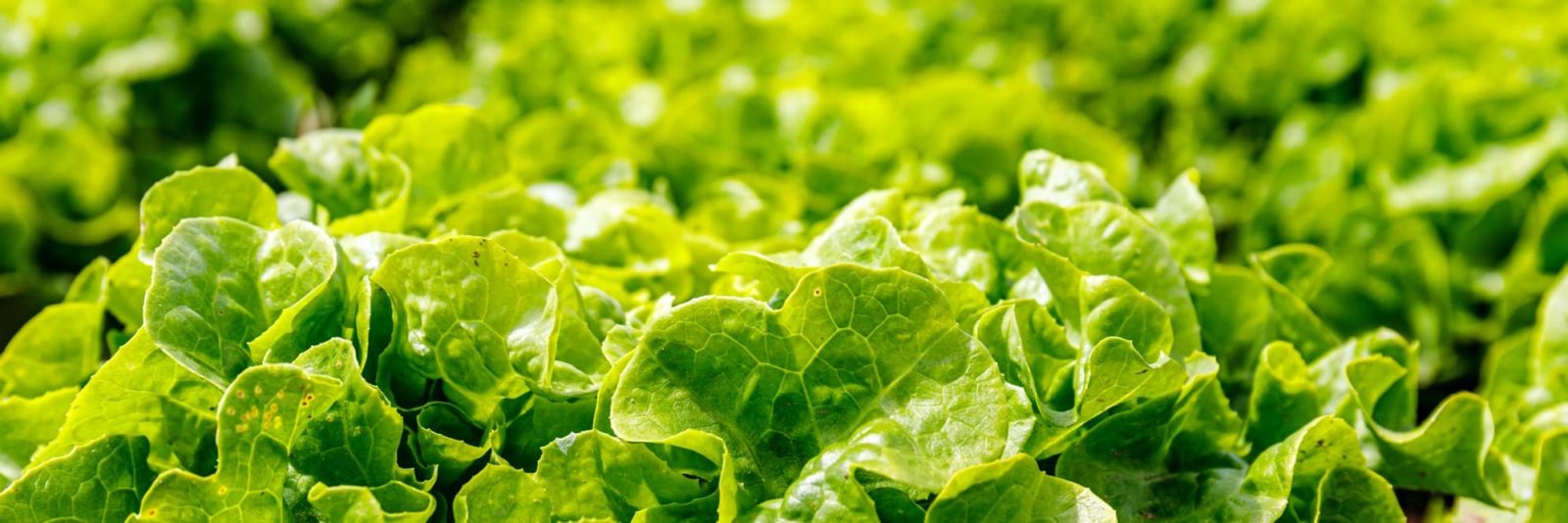
VEGETABLES > LETTUCE
Chris is a gardening writer and nature enthusiast. He graduated from Oxford Brookes University in 2022 with an MA in Psychology. Chris works with the Leeds Green Action Society, helping their food cooperative by growing various fruit and vegetables on their two allotments in Hyde Park, Leeds.
Reviewed By COLIN SKELLY

Colin is a Horticulturist and Horticultural Consultant with experience in a range of practical and managerial roles across heritage, commercial and public horticulture. He holds the Royal Horticultural Society’s Master of Horticulture award and has a particular interest in horticultural ecology and naturalistic planting for habitat and climate resilience.
Contributions From EMILY CUPIT

Emily is a Gardening Writer, Photographer and Videographer from Derbyshire, UK. She is the Founder of Emily's Green Diary - a community of more than 75,000 people who share in her gardening journey.
IN THIS GUIDE
LETTUCE GUIDES
Whether you favour the humble salad – the most traditional way to eat lettuce – or prefer something a little jazzier like a grilled lettuce leaf, it’s almost guaranteed that you’re at least familiar with this ubiquitous vegetable.
Head to any supermarket and you’ll see the usual suspects: Iceberg, leaf, romaine, and so on.
But this family has many, many more members to get acquainted with.
For the intrepid gardener looking to expand their growing repertoire, lettuce is an intriguing avenue to explore.
“I also absolutely love growing cut-and-come-again lettuce,” shares Kate Cotterill, Garden Designer and Co-Director of She Grows Veg.
“We don’t buy lettuce from March onwards and that makes a massive difference and saves us a lot of money throughout the year.
“Being able to pop out and cut it and then wait for it to grow back again is just fantastic.”
With a selection of exciting varieties, a long growing season, and a much lower cost per head when you grow your own, there are plenty of reasons to incorporate this vegetable into your plans.
Overview
| Botanical Name | Lactuca sativa |
| Common Name(s) | Lettuce |
| Plant Type | Vegetable |
| Native Area | Cultivated |
| Hardiness Rating | Most H2-H4 |
| Foliage | Annual |
Sunlight
Preferred
Full Sun / Light Shade
Exposure
Sheltered
Size
Height
0.1 – 0.5M
Spread
0.1 – 0.5M
Soil
Preferred
Most Fertile Soil Types
Moisture
Moist but well drained
pH
Any
This plant, with the Latin name Lactuca sativa, is actually a member of the daisy family.1Asteraceae – The Daisy Family. (n.d.). Wildlife Journal Junior. Retrieved March 21, 2023, from https://nhpbs.org/wild/asteracae.asp
It’s been part of human agriculture for a long time, with recorded growth dating back to the Ancient Egyptians.2Jerkins, M. (2021, January 4). Lettuce and Kings: The Power Struggle Between Horus and Set. Michigan Quarterly Review. Retrieved March 21, 2023, from https://sites.lsa.umich.edu/mqr/2015/05/lettuce-and-kings-the-power-struggle-between-horus-and-set-2/
Since then it’s been commonplace across Europe, with new types cropping up throughout the centuries as people developed varieties.
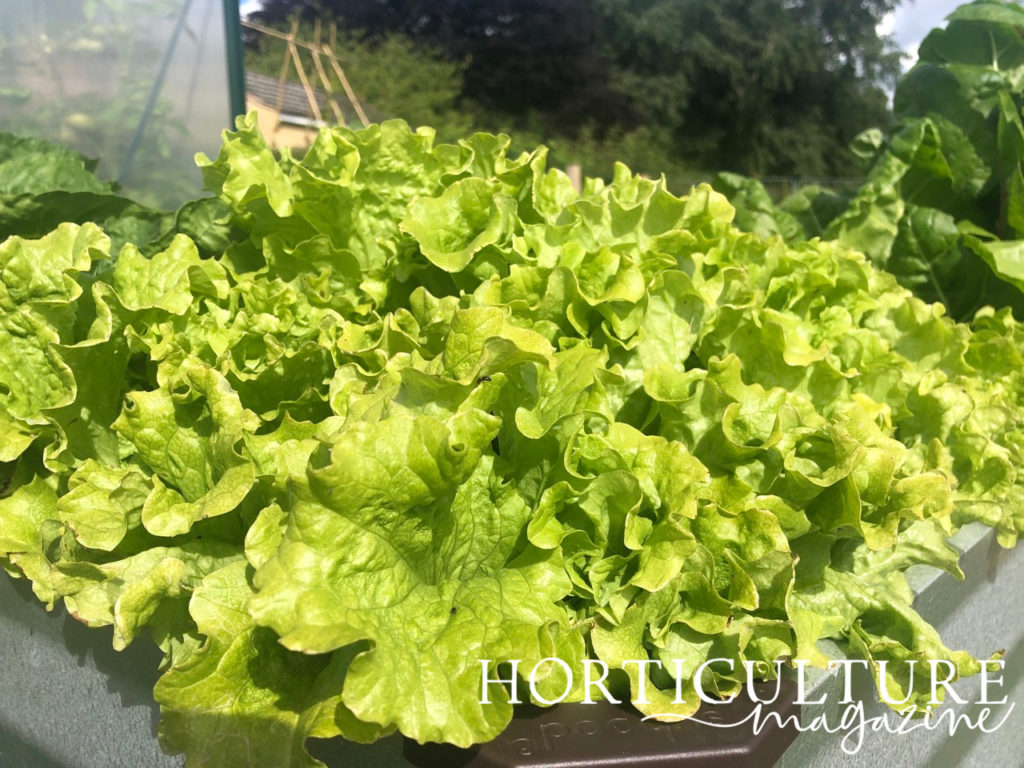
Intriguingly, the Latin name ‘Lactuca’ has the root ‘lac’, which translates to milk.3Editors of Merriam-Webster. (2022). The Far-Out History of “Galaxy.” In Merriam-Webster. Retrieved March 21, 2023, from https://www.merriam-webster.com/words-at-play/word-history-of-galaxy
When cut, lettuce stems exude a white liquid, now known as latex, which Romans incorporated into the name.4Kantor, S. (2015, April 6). Study points the way toward producing rubber from lettuce. Washington State University Insider. Retrieved March 21, 2023, from https://news.wsu.edu/press-release/2015/04/06/study-points-the-way-toward-producing-rubber-from-lettuce/
Lettuce has now spread across the globe, making a popular and delicious addition to myriad national cuisines.
How To Grow Lettuce
You’ll be pleased to know that lettuce is easy to grow and, providing you’re diligent with your maintenance, you can expect a bumper harvest.
Many gardeners choose to grow multiple varieties of lettuce simultaneously to give them an array of flavours and colours to use in their cooking.
“This year I’m growing 6 different varieties in all different colours,” says Kate.
“They look so beautiful and taste much nicer than anything you can get in the supermarket.”
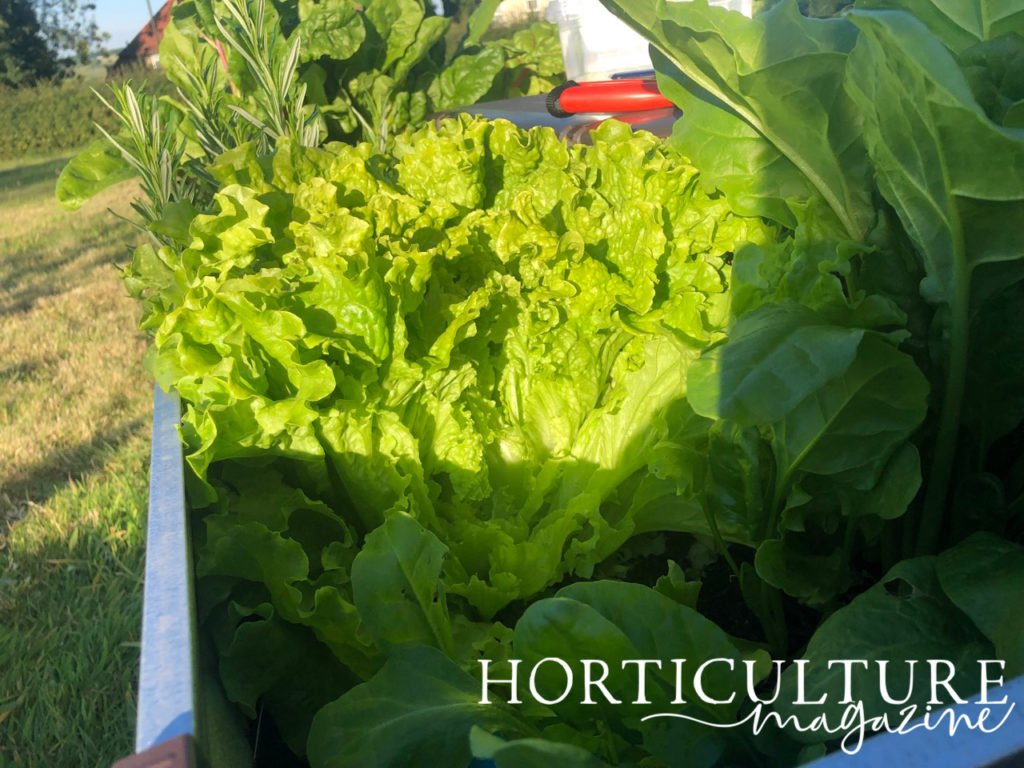
After all, any salad can only be improved by making use of multiple types of leaf.
In this section we’ll cover every aspect of growing lettuce, from sowing through to harvest.
When To Sow
With a sowing season that runs from March to September, you’ve got the option to plant multiple waves of lettuce.
This ensures a steady supply throughout the year, letting you dip in and out as you need rather than having to make use of thousands of lettuce leaves at once.
If you go for this option, which we do recommend, make sure to protect seedlings early and late in the season.
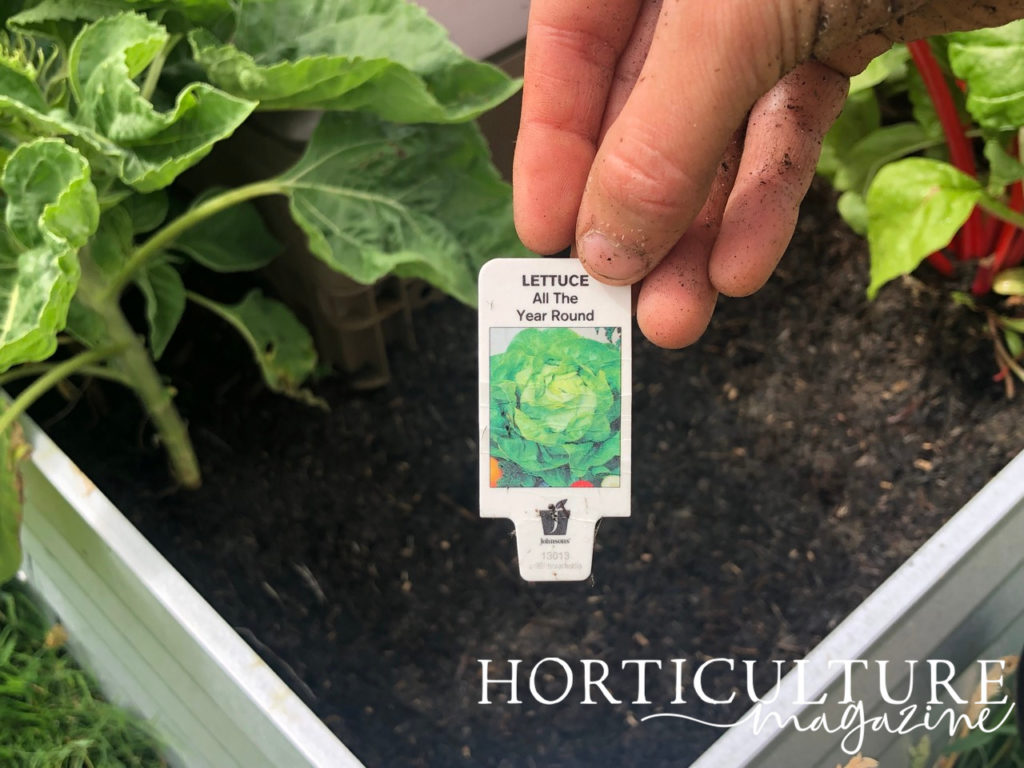
These periods will be cooler than late spring and summer, and cold temperatures can damage lettuce crops.
Use a cloche if growing outside, or consider growing in a polytunnel, greenhouse, or similar.
Here’s a little breakdown of when you’ll be able to harvest based on different sow times:
- Sow indoors in early February and plant out in early March for an early summer harvest
- Sow outdoors in March through July for a late summer / early autumn harvest
- Sow outdoors in early August for an early winter harvest
- Sow a suitable variety in a heated area in September or October for an early spring harvest
As you can see, it’s possible to grow lettuce to harvest for most of the year.
Just pay attention to the needs of each variety, and to making sure they’re kept warm enough.
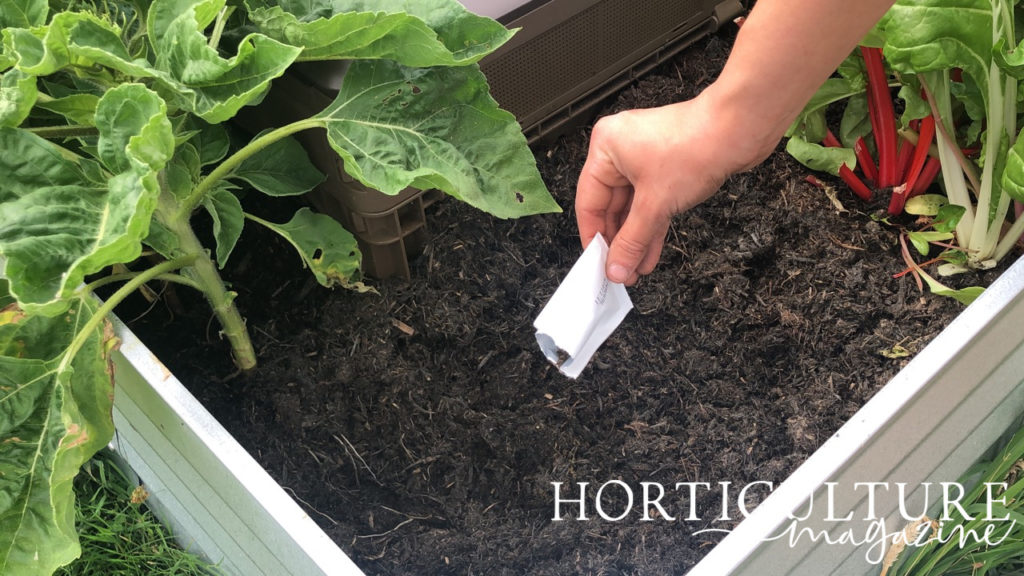
This applies with hot temperatures, too. For summer planting, make sure to shade seedlings and keep them hydrated with cold water.
Where To Grow
Lettuce plants do best in full sun, and prefer soil that can retain moisture.
Work a few centimetres of compost or manure through the soil before planting out your lettuces, ideally in the autumn before you plan to sow if you’ve left yourself enough time.
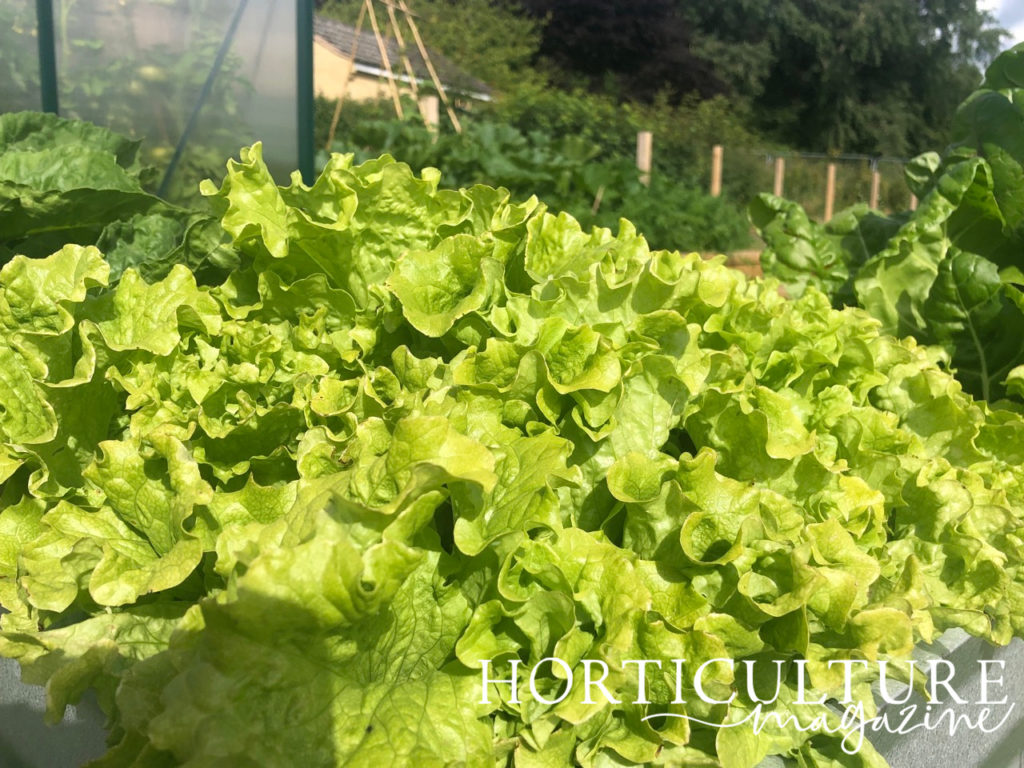
This will give the matter a chance to break down and release its nutrients into the soil.
Lettuce will also grow in grow bags or containers, just take care to water more frequently.
“I tend to grow lettuce in my greenhouse to avoid slugs as far as possible as I don’t use slug pellets,” shares Master Horticulturist Colin Skelly.
“This means I grow in containers rather than in the soil.
“When space is limited or where growing in containers .there are smaller cultivars available such as ‘Tom Thumb’.”
“Lettuce can also be grown on a windowsill and, if it’s a cut-and-come-again variety, you can keep harvesting from it every day,” Kate adds.
Watering
When the soil gets dry, water your lettuce.
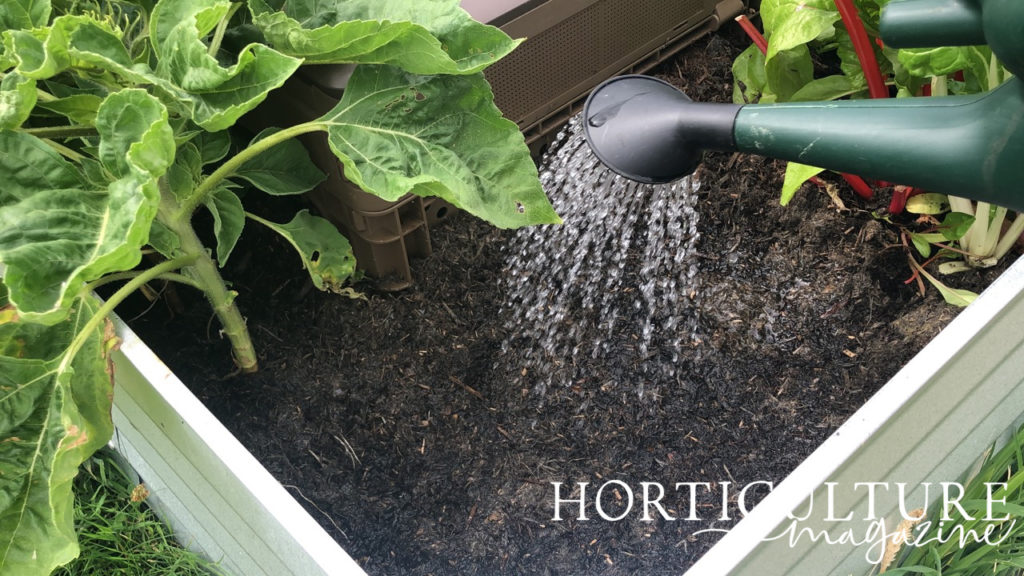
This is best done early in the morning to give the water a chance to be absorbed or evaporate away, except in very hot spells as mentioned previously.
In hot spells, water in the evening.
Fertilising
Lettuce is a busy crop, growing quickly and making way for new plants to be grown in the same soil during the same season.
With this in mind, it makes sense that they need to be fertilised frequently.
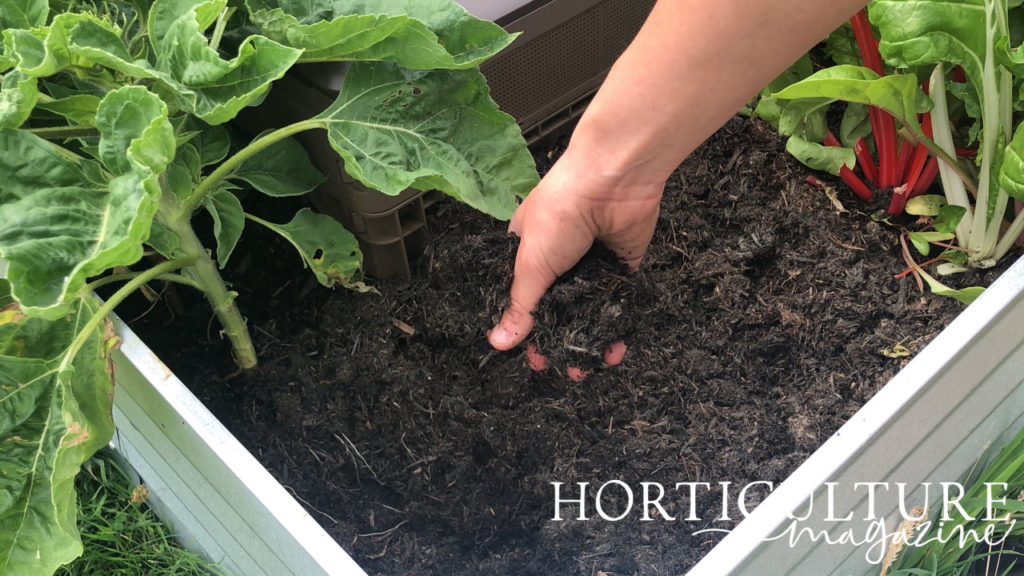
You can feed lettuce fortnightly with a 5-5-5 fertiliser, or any fertiliser where the three numbers (referring to nitrogen, phosphate, and potassium percentages) are close to equal.
Simply dilute the mixture to half-strength and apply to the plant in accordance with the instructions on the packet.
Storing Lettuce
Lettuce doesn’t last long, unfortunately, even in the best conditions.
Once picked, aim to eat your lettuce as quickly as possible – ideally in the first few days.
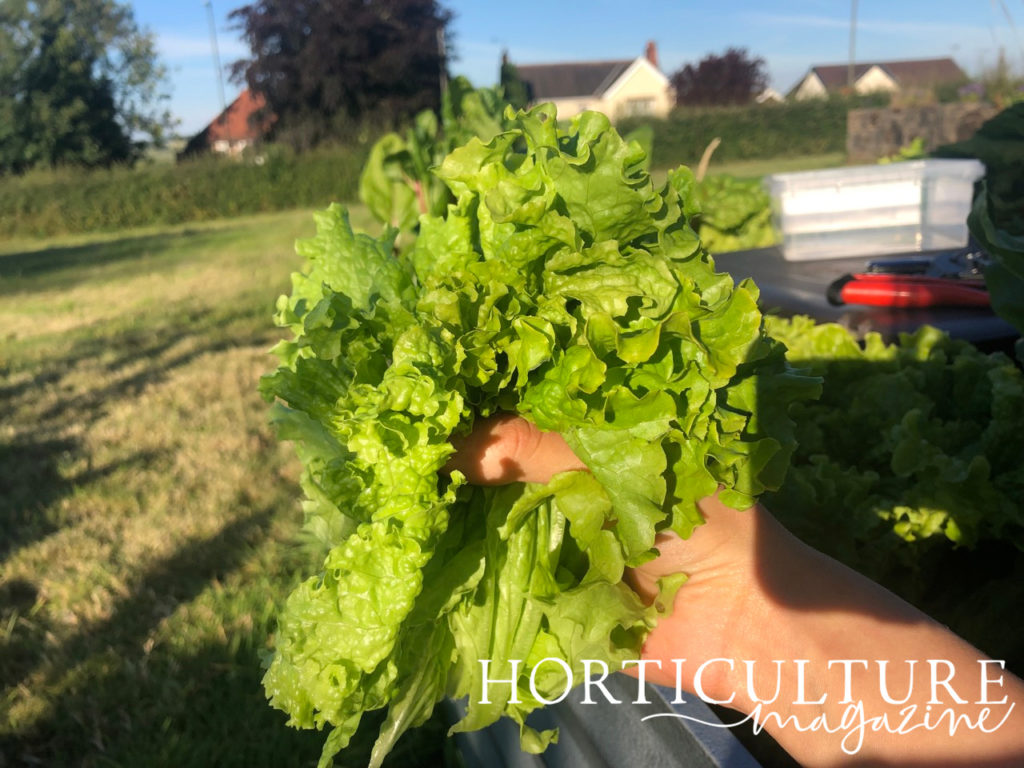
This will ensure the crunchiest texture, fullest flavours, and least amount of unsightly browning of the leaves.
If you do need to store it, keep it cool, preferably in your fridge’s salad drawer.
Common Issues
Unfortunately lettuce is prone to attract quite the array of pests and problems.
Here’s what to look for and how to reduce the likelihood of interference.
Sparrows
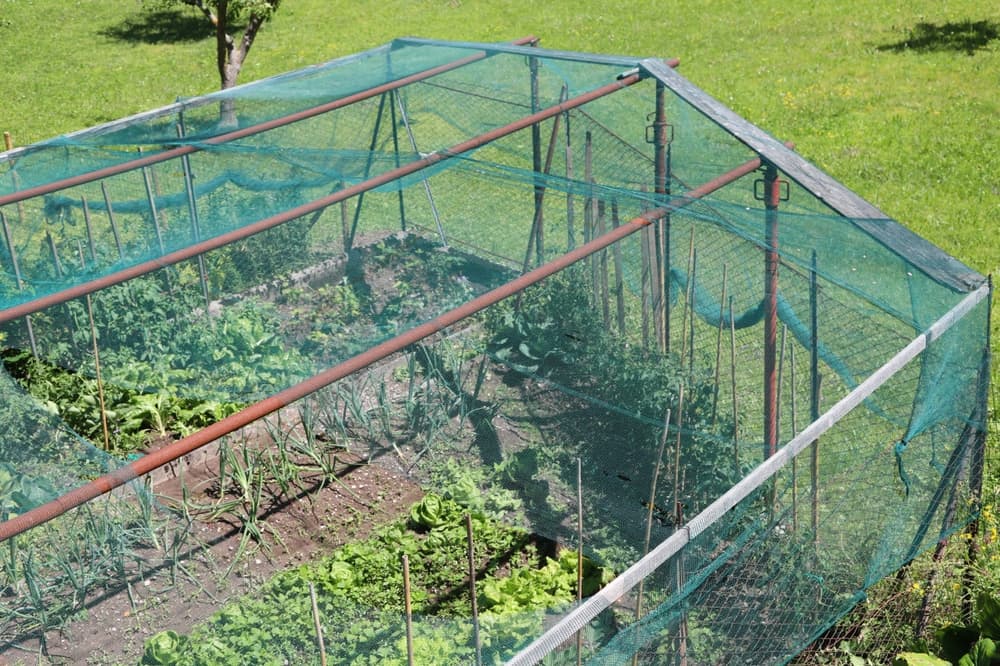
These vigilant birds like nothing more than to eat young lettuce plants, and will cause quite a bit of damage if left to their devices.
A physical deterrent is your best bet here: Something like chicken wire, garden fleece, or similar.
Make sure their inquisitive beaks can’t get through.
Slugs & Snails
Simon and Garfunkel once sang that they’d rather be a sparrow than a snail. Growing lettuce, it’s likely that you’ll be finding both.
Lettuce is firmly on the favoured-food list for these slimy visitors.
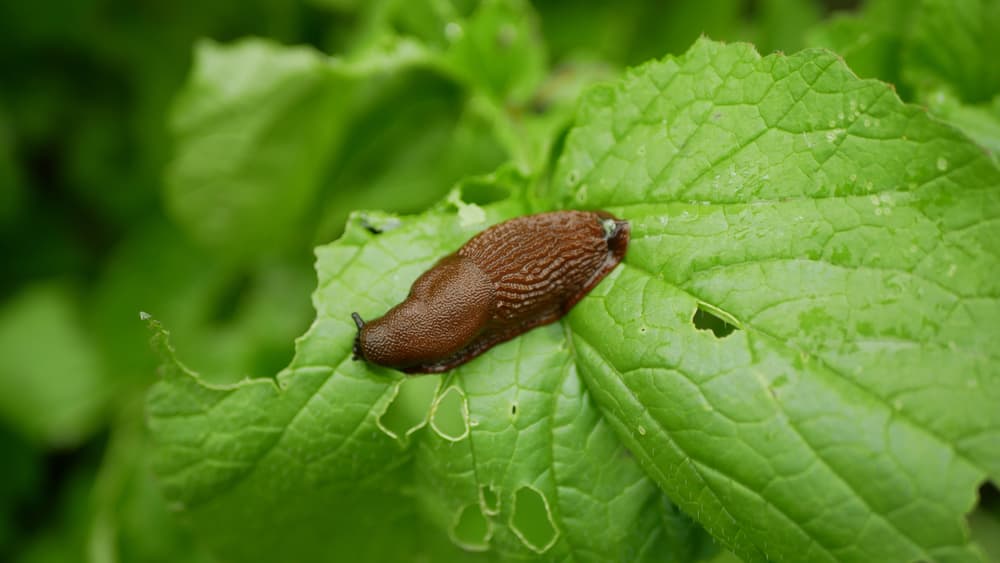
You’ll most likely see slime trails as well as sections of leaves that have been nibbled away.
Thankfully there are plenty of ways to deter slugs and snails from visiting.
You can make a beer trap to lure them in, erect barriers of eggshells, or use one of many pesticides.
Aphids
These critters also enjoy visiting and feasting upon lettuce.
Though smaller than slugs and snails, they’re still visible to the naked eye.
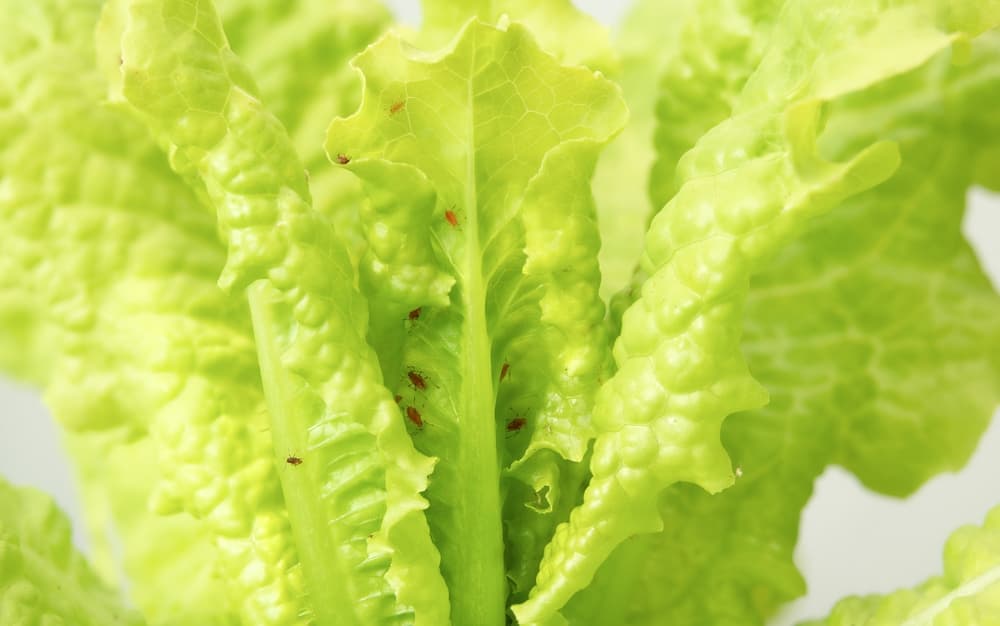
Keep a lookout for small green bugs or their tiny white eggs, and remove by hand if you see them.
Then look to see whether they return: If not, you’re in luck.
If so, you’ll want to find a pesticide to discourage repeat visits.
Bolting
If conditions aren’t quite right, lettuce is prone to bolt.
This means it puts out seed early, and is no longer good for eating.
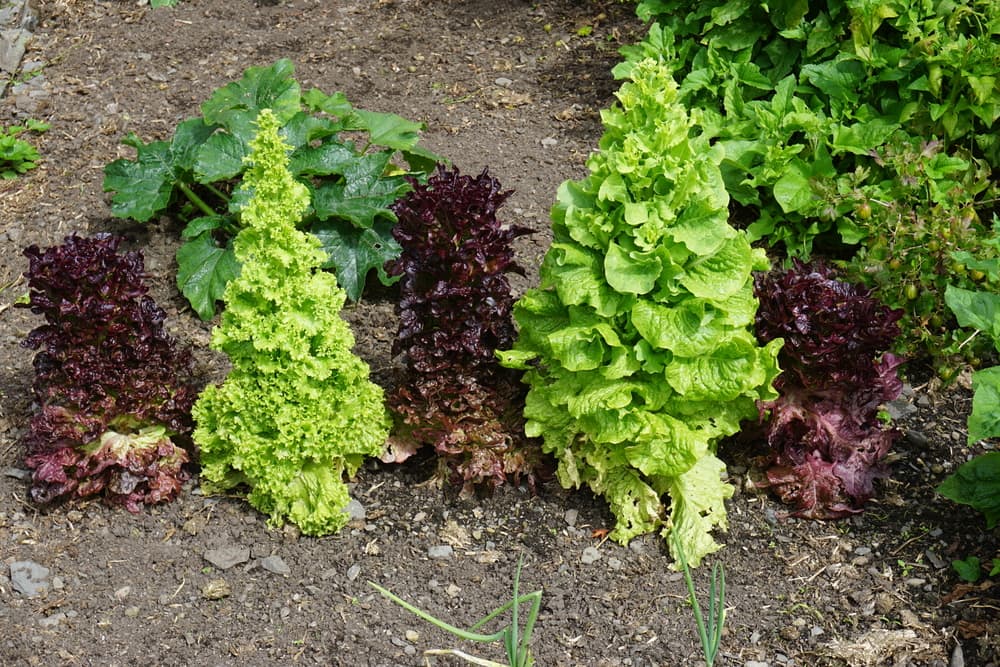
Common causes of lettuce bolting include sowing at the wrong time, and letting your soil dry out.
Bolting is a response to unfavourable conditions and is a survival mechanism by which the plant tries to put out seed to ensure ongoing survival, even if the individual plant can’t survive.
“Once you start growing lettuce, you’ll never go back,” says Kate.
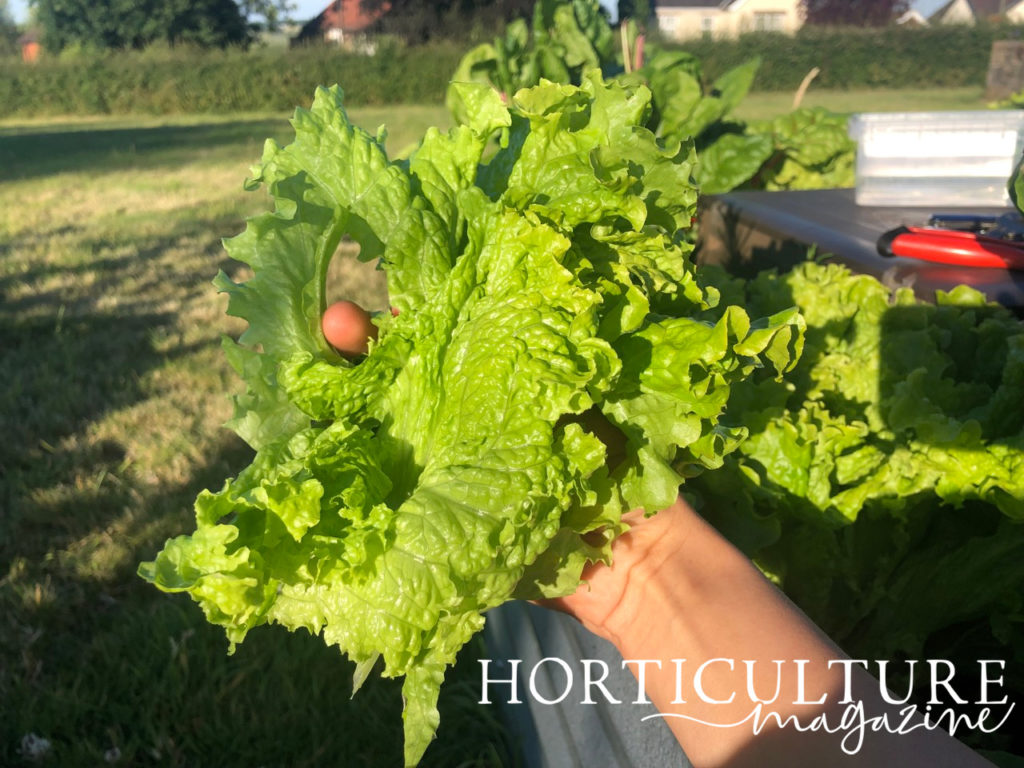
No longer will you spend money on lettuce, only to use a few leaves and see the rest wilt and turn brown, forlorn and forgotten in the bottom of your fridge.
No – now, you’ll have fresh, green leaves whenever you need.
References
- 1Asteraceae – The Daisy Family. (n.d.). Wildlife Journal Junior. Retrieved March 21, 2023, from https://nhpbs.org/wild/asteracae.asp
- 2Jerkins, M. (2021, January 4). Lettuce and Kings: The Power Struggle Between Horus and Set. Michigan Quarterly Review. Retrieved March 21, 2023, from https://sites.lsa.umich.edu/mqr/2015/05/lettuce-and-kings-the-power-struggle-between-horus-and-set-2/
- 3Editors of Merriam-Webster. (2022). The Far-Out History of “Galaxy.” In Merriam-Webster. Retrieved March 21, 2023, from https://www.merriam-webster.com/words-at-play/word-history-of-galaxy
- 4Kantor, S. (2015, April 6). Study points the way toward producing rubber from lettuce. Washington State University Insider. Retrieved March 21, 2023, from https://news.wsu.edu/press-release/2015/04/06/study-points-the-way-toward-producing-rubber-from-lettuce/

